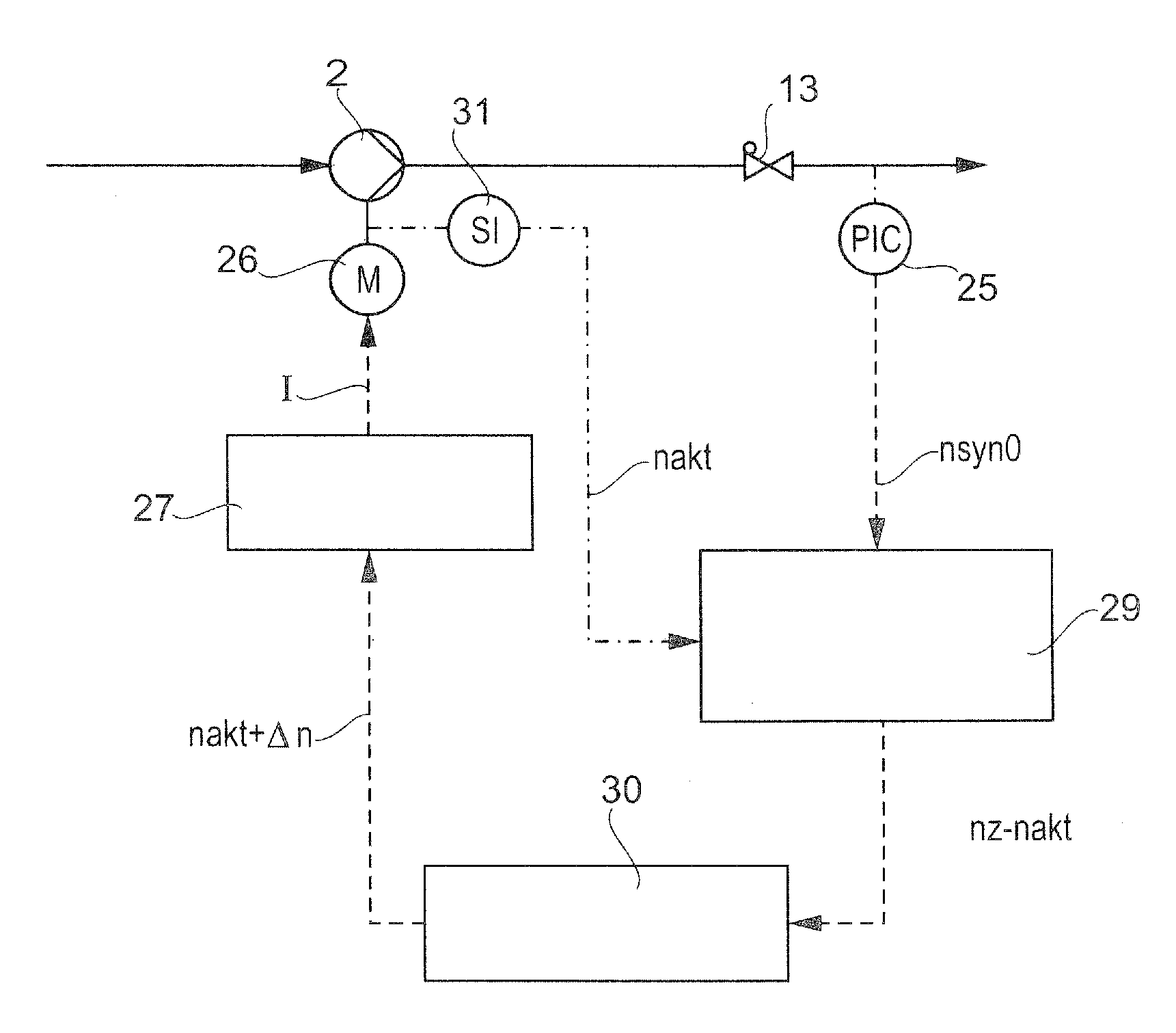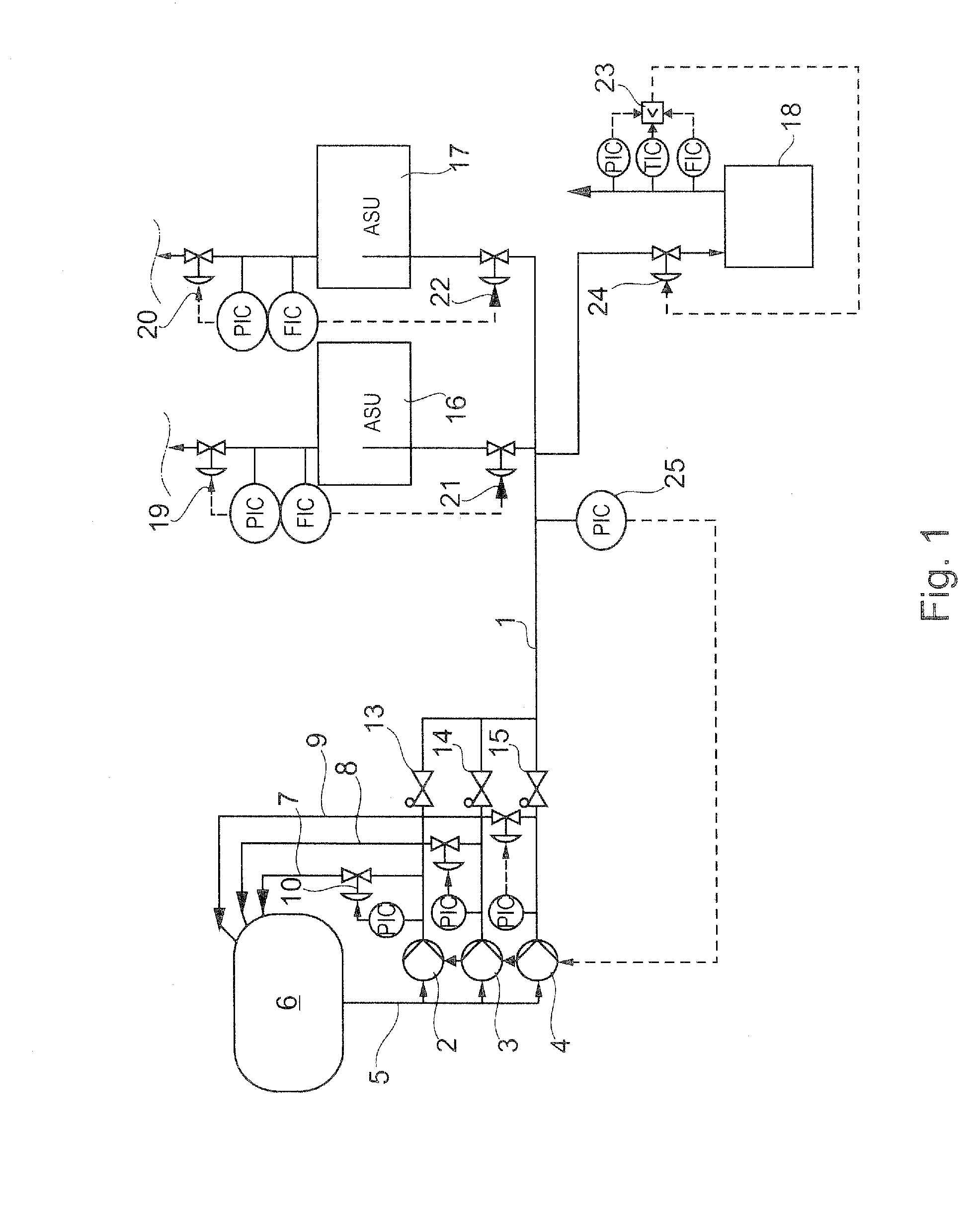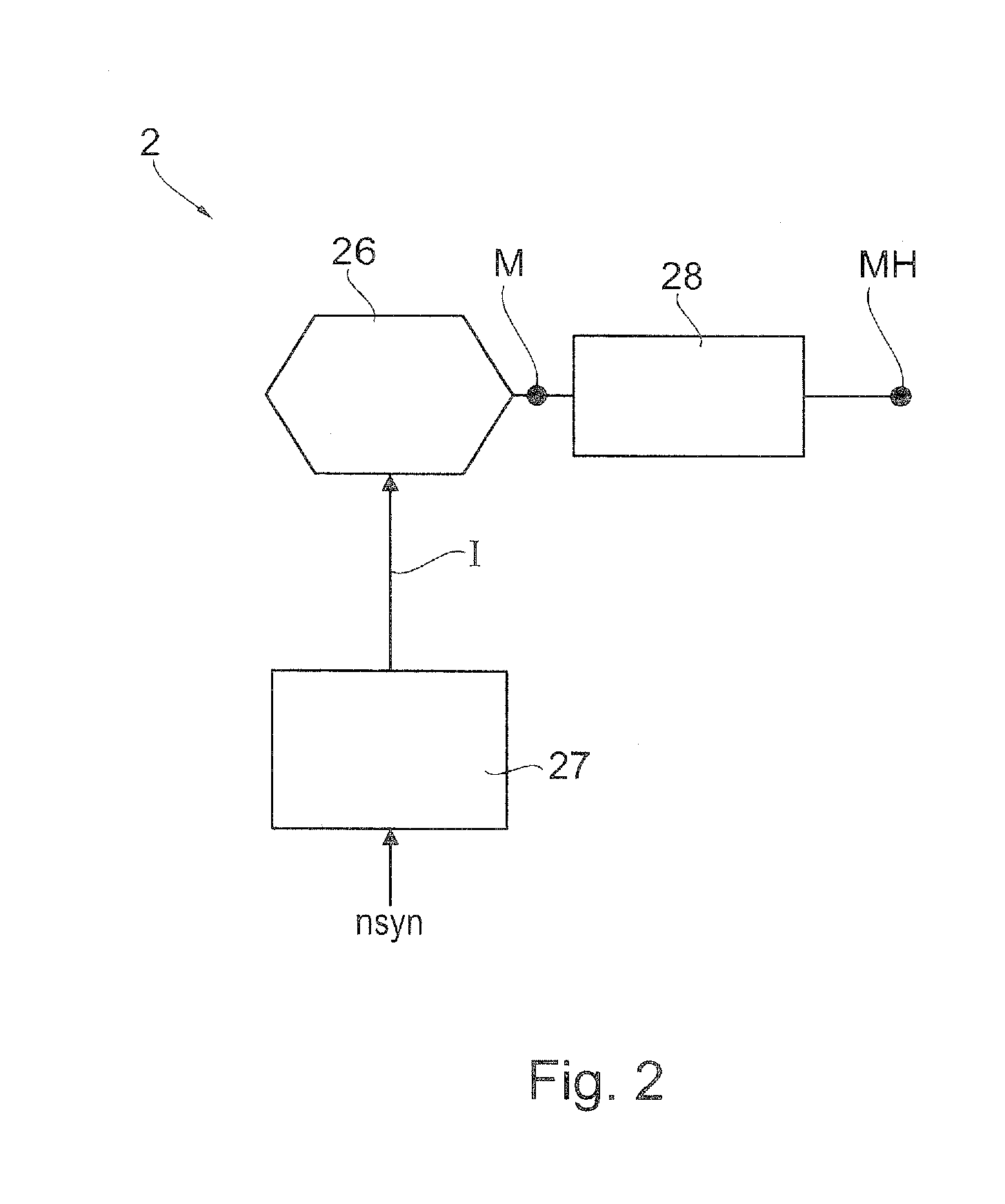Method for driving an asynchronous motor and pump arrangement with asynchronous motor
a technology of asynchronous motors and pump arrangements, applied in the direction of control systems, pump control, non-positive displacement fluid engines, etc., can solve the problem of greater angular acceleration, and achieve the effect of facilitating the implementation of the method
- Summary
- Abstract
- Description
- Claims
- Application Information
AI Technical Summary
Benefits of technology
Problems solved by technology
Method used
Image
Examples
Embodiment Construction
[0030]In the case of air separation units with internal compression, cryogenic air or fluids (LIN, LOX, LAR=liquid nitrogen, oxygen, argon), for example, are brought to an operating pressure by means of pumping or compression and are delivered to a heat exchanger of the corresponding air separation unit (ASU). The corresponding cryogenic fluid is then evaporated therein. In order to allow the particular process to be continued despite the failure of one of the pumps, redundant pumps are provided which on failure of the actual working pump start operating as a substitute pump. It is also conceivable that several individual system parts are provided with pressurized cryogenic fluid from a common reservoir or tank. This is schematically shown in FIG. 1, for example.
[0031]A common high-pressure fluid line 1 is provided which is supplied with high-pressure fluid by three pumps 2, 3, 4. The pumps draw the particular product via a feed line 5 from a common reservoir or tank 6. For each pum...
PUM
 Login to View More
Login to View More Abstract
Description
Claims
Application Information
 Login to View More
Login to View More - R&D
- Intellectual Property
- Life Sciences
- Materials
- Tech Scout
- Unparalleled Data Quality
- Higher Quality Content
- 60% Fewer Hallucinations
Browse by: Latest US Patents, China's latest patents, Technical Efficacy Thesaurus, Application Domain, Technology Topic, Popular Technical Reports.
© 2025 PatSnap. All rights reserved.Legal|Privacy policy|Modern Slavery Act Transparency Statement|Sitemap|About US| Contact US: help@patsnap.com



